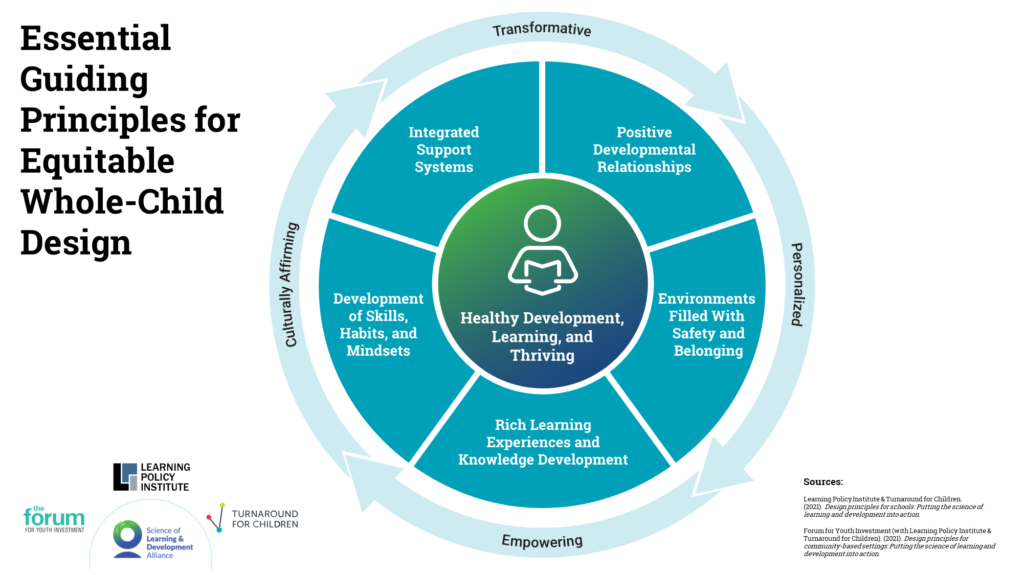Each week one of our team members shares a Weekly Remix Round Up that lifts up a topic they’ve been reflecting on or something that sparked their interest based on an article they’ve read, a conversation they’ve participated in, etc. – that lifts up a topic they’ve been reflecting on or something that sparked their interest.
Elevating the Essentials

As we’ve been prepping for several upcoming conversations, we keep popping into decks or sharing on screen – The Essential Guiding Principles for Whole Child Design – what we call the non-negotiables or “the blue wheel.” If you aren’t familiar, you can read more about the why behind them here and can read a series of blogs on their application to community–based settings starting here.
This week our colleagues at AIR shared a tool they have been working on that helps leaders plan and design using the guiding principles. While the full tool will be available soon, we want to share the rating system they use in the tool:

Two phrases deserve some consideration:
“Partially addressed” made me reflect on a conversation Karen shared with us that she had with one of our partners about a different set of principles. The gist of the conversation was, “Is it better to do one really well as a first step or to do a bit of all five?” It’s not realistic to get to a 5 or even a 4 when you’re just getting started, but too often we think about one wedge in the wheel. “Our program focuses on relationships.” “This is a skill building class.” As is made clear in Design Principles for Community-based Settings, there is no need to change a program’s overarching focus. Instead, we should think of it as an entry point while still tending to all aspects of whole child design. Just as we want to get from some to all young people, we want to get from some to all principles. We encourage you to consider:
- Where does your organization or programs’ blue wheel have imbalance?
- What is a best first step toward action on any area of the blue wheel which you have not begun addressing?
“Some vs all” is at the core of what we mean when we talk about changing the odds. Fully addressing the design principles for some young people may help them beat the odds as individuals. It might create a space they don’t experience elsewhere – where they have strong relationships, feel they belong, have opportunities for engaging learning, and more. Or it may mean that we have biases we need to identify and address as we analyze for whom we are creating positive developmental settings for and whom we are not.
“Some vs all” is at the core of what we mean when we talk about changing the odds.
Fully addressing the design principles for all young people (especially focusing on all those within groups that most frequently face marginalization) in all places where they spend their time creates a scenario where we are changing the odds. We encourage you to consider:
- Where are you starting – are you designing for some or intentionally designing for all within the target populations of your program or organization?
- Are you celebrating beating the odds (individual young people) or changing the odds (systems change)?



No comment yet, add your voice below!